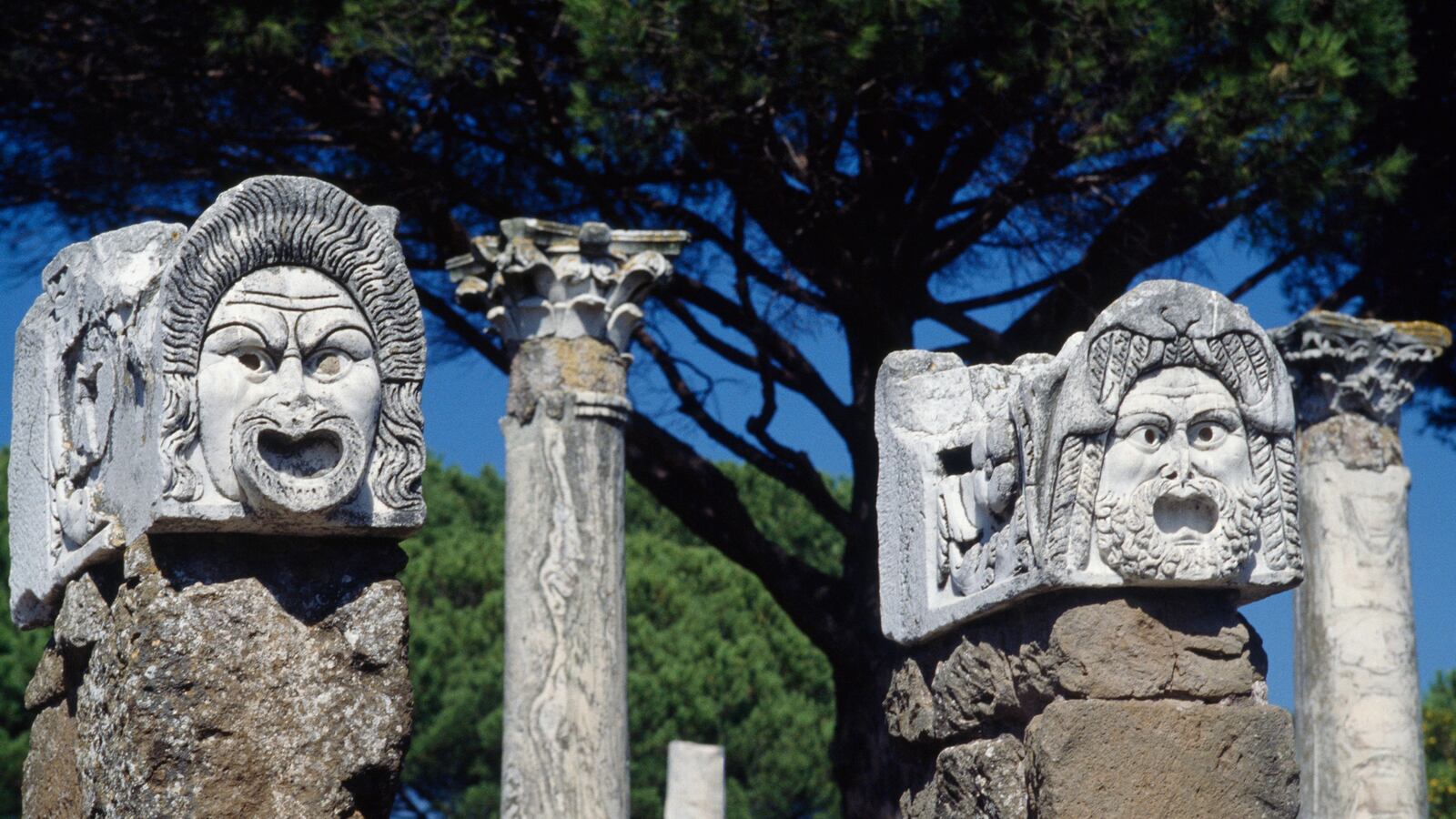The ruins of the ancient Roman town of Ostia Antica about 18 miles southeast of Rome aren’t nearly as sexy as those of Pompeii outside of Naples. After all, it’s hard to compete with a volcanic eruption that buried a city in hot ash and lava, perfectly preserving its contents—people included. But Ostia Antica has its own allure. Not only is it the second-best-kept ancient Roman city anywhere in the world (after Pompeii), but archeologists have also just discovered that there is far more of it than anyone ever knew. In fact, if the new discoveries are excavated, Ostia Antica will be far larger than the ruins of Pompeii, and possibly provide an even better window to the past. The only problem: There are no funds to do the digging and it butts up against Rome’s busy Fiumicino airport runways, so it will likely stay buried.

Archeologists have already learned a lot from Ostia Antica, which was an important river port and transit point for goods traveling to and from ancient Rome. But since historians have long thought that Ostia Antica’s border was the Tiber River, which winds through Rome and into the Mediterranean Sea, they only knew half the story. The discovery of the new section of the ruins, which was led by the British universities of Southampton and Cambridge, now effectively extends the city to the other side of the Tiber, meaning the river actually ran through the town, which changes everything. “This city was not just sea-faring but also an emporium,” Darius Arya, an American archeologist based in Rome who founded The American Institute for Roman Culture, which was instrumental in the project, told The Daily Beast. “We’ll learn a lot more about the goods shipped to and stored in this massive, sprawling town, en route to Rome. There will be much more evidence of the warehouse and storage mechanisms, and the collegia [associations] that ran them.”
Like many discoveries, the new part of Ostia Antica was found by accident. Last summer, archeologists discovered a Roman mausoleum and ancient dwelling while cleaning up a rouge landfill on an adjacent dig. “They found a circular-plan mausoleum clad with travertine blocks, which had its initial stage between the end of the first century B.C and the start of the first century A.D., with stages of reuse up to the 5th Century A.D.,” Paoloa Germoni, Ostia’s superintendent, said when she presented the project. “A wall structure from late antiquity was discovered under the park’s humus layer and the illegal dump site, which revealed a beautiful polychrome marble-covered pavement.”

That discovery led to more exploration, which allowed the archeologists to map out Ostia Antica’s real borders, revealing a city 35 percent larger than anyone thought. It also theoretically moves the ancient coastline more than two miles from where historians originally placed it. Using everything from helium balloons and geothermal scanners to drones, the British team was able to pinpoint warehouses and a building the size of two football fields, along with fortification towers used to defend the ancient port city. “Our research not only increases the known area of the ancient city, it also shows that the Tiber bisected Ostia rather than defining its northern side,” said Simon Keay, who heads the Portus Project, which has an extensive blog that follows their work. “The presence of the warehouses along that northern bank of the river provides us with further evidence for the commercial activities that took place there in the first two centuries.”
The new Ostia Antica boundaries are like the missing piece of a puzzle that now links the discovery of several ancient ships on the other side of the Tiber to the ancient port. When Fiumicino airport was built in the 1950s, construction workers unearthed several ancient ships at the port constructed by Emperor Claudius in 46 A.D. that are now housed in a nearby museum. In 2011, archeologists found another ancient ship closer to Ostia that they considered to be “a novelty,” according to Anna Maria Moretti, the archeological superintendent for Rome and Ostia Antica, because it was discovered more than 13 feet underground. “At that depth, we had never found a ship, only layers of buildings,” she says.

Plans to restore the ancient vessel, which includes remains of ropes and cables, are in the works and will utilize some of the most advanced techniques available. “We’re keeping it constantly covered in water so that the wood doesn’t dry out,” Moretti said.
Excavating the whole of new Ostia Antica won’t be quite as easy, and it may never even happen, which may push the archeologists to use new techniques to uncover history. “I don’t think it will happen in the short term, or ever,” says Arya. “You’ll gain knowledge but it’d be a huge cost to restore what remains would be unearthed—and funding is such an issue right now. It wouldn’t be responsible. So, we turn to other technologies to get a picture of what lies beneath.”






